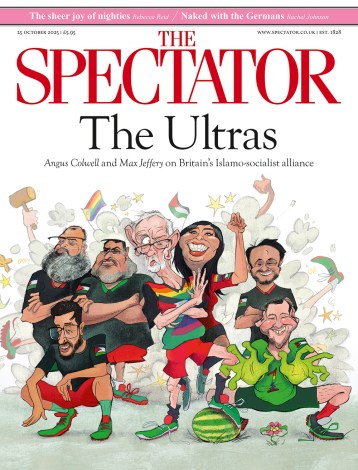Forty years ago V. S. Naipaul enraged Indians by describing India as ‘an area of darkness’. He also upset a great many Western liberals who were then discovering in India a land of all-pervading spirituality. Later, he returned to India to write more kindly about ‘a wounded civilisation’ undergoing a liberation of spirit through ‘rage and revolt’.
Which leads me to Kevin Rushby’s new travel book, subtitled ‘Through India in Search of Bandits, the Thug Cult and the British Raj’, which takes India’s liberation through rage and revolt as its central theme. It deals chiefly with the phenomenon and subsequent legacy of India’s notorious cult of the Thug or ‘deceiver’, first brought to public attention by the redoubtable Major William Sleeman in the early 1830s and subsequently eradicated by him and his band of assistants and sepoys by the ‘turning’ of captured gang-members into informers. The killing methods of the thugs and their devotion to the black goddess of death, Kali, thrilled and revolted the Victorians, and secured a lasting hold in the popular imagination that lingers on in such films as Indiana Jones and the Temple of Doom and the Merchant Ivory production The Deceivers.
It is a great subject and Rushby tackles it with gusto, first zig-zagging through south India in search of India’s most elusive and notorious bandit (who remains unsurprisingly elusive), then zipping over to Bombay to meet one of its many godfathers (currently representing himself as a born-again social worker) before heading for the badlands that the British knew as Bundelkund, divided between Madya Pradesh and Bihar, the heartland of the thug cult. He then moves north to Benares for some heavy and elegiac immersion both in and around the Ganges before a short and bloody climax in Calcutta.
Rushby is always a pleasure to read and Children of Kali is no exception. Unlike Naipaul, who always keeps the polluting subject at a very Brahmin-like arm’s length, Rushby likes to get stuck in. No detached traveller he. He follows his nose to the most outlandish of places and has a series of encounters that are by turns hysterically funny and deeply sinister. He has a sharp sense of mood, place and character, and a wicked turn of phrase: a hotelier with bad teeth has a smile ‘like a broken traffic light, warning me to be careful’, another has the cautious driving style ‘one expected from God on his day of rest’. He also shows considerable personal courage in seeking to get to grips with one of the seamiest aspects of Mother India: the moral vacuum at the heart of certain aspects of tantric religion – even if, by the end of his trawl, he comes dangerously close to identifying with it in a very Genet-like manner (though not altogether convincingly).
Which is where he and I part company, for I closed this book with a profound sense of unease over its author’s lack of moral judgment. On the one hand we have: firstly, the well documented oppression and murder of possibly millions in central India by thugs and bandits prior to British intervention; secondly, the present lawlessness and upsurge in banditry to which large parts of central India have reverted; thirdly, the murderous and hugely corrupting activities of India’s present-day gangster politicos whom Rushby seems almost to admire for their indifference to human life. All these are paraded before our eyes in Children of Kali without judgment, and with scarcely a word being said about the contributing role of caste in all this.
On the other hand, we are presented with a major revelation: that ‘British India demonised millions as hereditary criminals, setting off a witch-hunt whose effects are still felt today’; that thuggee and the other less ritualised forms of organised brigandage endemic throughout central India in Sleeman’s time were ‘distorted and misunderstood by those in power [i.e. the British] to further their own ends’; and that Sleeman himself was the chief culprit, because of his ‘insistence on thuggee as a hereditary lineage of killers’, which was but a short step to the Criminal Tribes Act of 1871, whereby certain castes who lived outside the law were deemed to be criminals. In sum, a handful of British officials stuck their noses into this murk, sorted it out (infinitely to the greater good), tried to stop it ever happening again – and for this ‘victimisation’ are deemed ‘evil’ – a word that Rushby uses twice in this context.
Yes, it is perfectly true that a number of theses have been written in recent years in India, France and America which seek to show either that thuggee was an invention of the British or that it was exploited by the British to tighten their stranglehold on India. But I know of no reputable historian, British or Indian, who supports these claims and I am sorry that Rushby has given them credence. Having said that, I should still like to congratulate him for giving warning of the latest wheeze being perpetrated by the shoe-shine urchins of Connaught Circus in New Delhi, which is to approach a potential customer and tell him that he has something exceedingly unpleasant on his shoes. ‘Blow me down!’, says the customer, ‘so I have. Here’s a reward for telling me and, yes, do please clean it off.’ Traveller, beware. Delhi’s shoe-shine boys now carry what can only be described as concealed shit-guns.




Comments